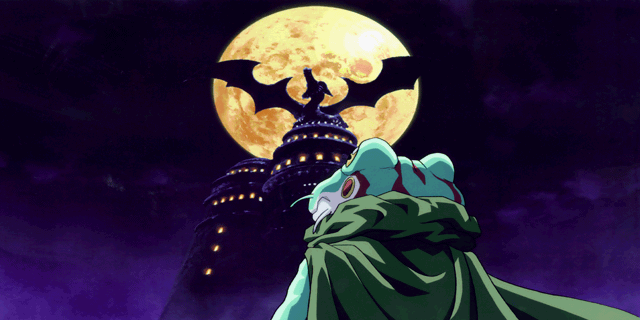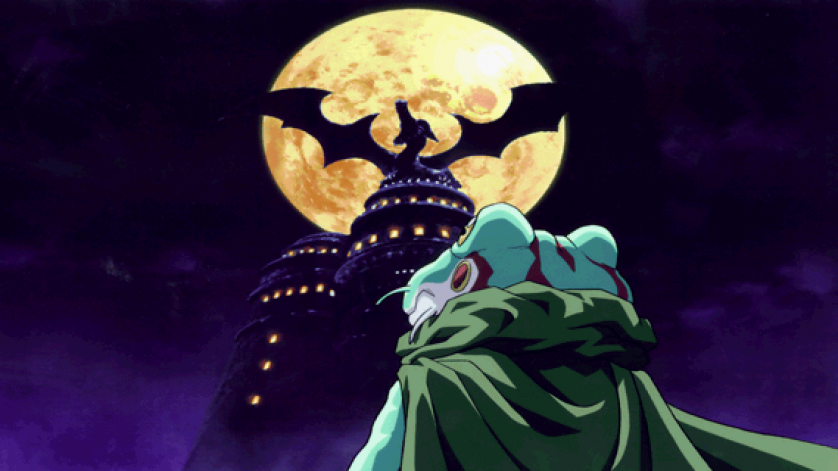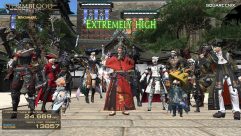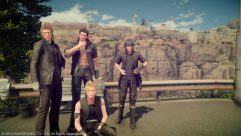Last week marked 20 years since the original Japanese release of Chrono Trigger. Square’s game has lost none of its appeal since then, writes Flintlock, our Community Manager.

This review contains minor spoilers.
Final Fantasy VI or Chrono Trigger? Many people consider Square’s two role-playing masterpieces for the Super Famicom (SNES) to be the leading candidates for the title of greatest game of all time. As you might expect from a member of staff on TheLifestream.net, I’d add Final Fantasy VII into the mix, but I don’t think I’d be able to pick a winner. That in itself is already a testament to the quality of Chrono Trigger, but the fact that I had never played it until two months ago should give you a further idea of what kind of an impression it left on me.
The fate of the world
The game begins in 1000 A.D. as Crono, the silent protagonist, is woken up by his mother. She tells her son that Lucca, his inventor friend, is waiting for him at the Millennial Fair. Crono picks up his pocket money and heads outside. Immediately, you have the freedom to explore the world, or at least a small part of it. Sooner or later, you’ll find your way to the fair, where the game’s story begins in earnest. Crono bumps into a girl called Marle, and Lucca’s latest invention sends the pair of them 400 years back in time to the middle ages.
After resolving the first paradox of the story – what self-respecting time travel game would be complete without one? – our heroes return to the present, but it’s not long before they are forced 1300 years into the future. They are greeted with a bleak, desolate landscape of tundra, destroyed machinery and howling winds. In the act of searching for a time gate to take them home again, Marle stumbles upon a visual record of 1999 A.D., specifically an event which came to be known as the Day of Lavos.
The video shows an enormous creature emerging from inside the Earth’s crust to rain destruction on the surface. Marle, Lucca and Crono decide they have been fortunate to witness the end of the world and resolve to travel back in time to prevent it. Their next journey through a time gate does not send them home, however, but to “The End of Time”, where an old man explains that they can return to 1000 A.D. by using one of the time gates located there. He also tells them to beware one specific time gate.
Of course, any self-respecting RPG player will immediately step into that very time gate. If they do so, they will find that it takes them to the Day of Lavos, where they can fight the final boss of the game and save the planet. Crisis averted, game over.
Wait, what?
That really is the end of the game – if you want it to be, and if you’re able to defeat Lavos, which you almost certainly won’t be after playing the game for just a few hours. It would be a bit ridiculous if the world-destroying alien parasite could be defeated by three teenagers, or two teenagers and one 300-year-old robot called Robo (who joined the party in 2300 A.D), with such little combat experience and bare-bones equipment. On the other hand, since it is a time travel game, what’s to stop them from having a go?
If you wanted to, you could grind your way to high enough levels to defeat Lavos without progressing the plot any further, but you’d be missing out on an epic story, half of the game’s characters, two more time periods, dozens of enjoyable boss fights, an almost absurd number of sidequests, and one of the greatest video game soundtracks ever written.
Unrivalled freedom
It doesn’t matter that very few players will defeat Lavos at the earliest opportunity – what’s important is that the game gives you the choice. I have never played a game that leaves so many decisions to the player. Yes, there is a clear path to take through most, but not all, of the game. You’re free to follow it, but you can also stray from the path at almost any moment. This is perhaps the one game where it makes sense that the events of the plot “wait” for you to trigger them.
Of course, your actions are a central part of that plot. Something you changed in 600 A.D. will have unintended consequences in 1000 A.D., and you might not even realise it. That’s one of the things I love most about the game: it puts a lot of trust in its players. It doesn’t feel the need to draw attention to every little detail in the way modern games usually do; instead, the detail – all the subtle references, connections between eras, and so on – is just waiting for you to find it in your own time. If you’re anything like me, you’ll get an immense amount of pleasure from finding it. Wouldn’t you rather play a game that makes you think than one that does all the thinking for you?
In keeping with the theme of freedom, there are very few forced encounters in the game. As exploration and battle take place on the same screen – another unusual mechanic for an RPG – it is possible to avoid fights by running past monsters rather than into them. As someone who enjoys being underleveled, I love that, but the game doesn’t quite follow through with it consistently. There are too many locations in the game which don’t have enemies on the screen but which still force you into battle. That applies even if you leave the screen for a few seconds, decide you have taken a wrong turn and head back the other way. The net result was that I didn’t explore every area quite as much as I would have liked. It’s a sign of how well the game was executed that that is my only complaint after about 25 hours of gameplay.
New Game+
If you’ll excuse the pun, Chrono Trigger was a game ahead of its time. It introduced, or at least popularised, many features which we take for granted in today’s games. New Game+, the ability to start the story from the beginning with the stats and equipment from a previous save file, was one such innovation. Because of the understated nature of the game, it’s worth playing through again to pick on things you might have missed the first time. Or the second time, or the third.
Playing the game again also gives you the opportunity to see more of the game’s multiple endings, which was another first for the RPG genre (Puzzle Bobble, an arcade game, was arguably the first game to include them, but the story was more of an accessory to the gameplay than integral to it). Even modern games with non-linear plots struggle to match Chrono Trigger’s 13 endings. Yes, thirteen – and the Nintendo DS port of the game got a bonus ending just for good measure. One of the endings isn’t even victorious: it shows what happens if your party is defeated by Lavos. Most games would just have a “game over” screen and make you try again, but again, Chrono Trigger defies convention.
“Crono’s character is at the very core of this case!”
The game’s cast is full of memorable characters from across the ages. As well as the four protagonists I already mentioned, there’s Ayla, the feisty chief of a prehistoric tribe of warriors and Frog, a knight from the middle ages with a tragic past. Then there are multiple charismatic and believable villains, including Magus, who appears in multiple eras, and a whole host of NPCs (non-player characters) with rich backstories.
Crono, on the other hand, doesn’t have a single line of dialogue in the game. Initially, that juxtaposition felt a little jarring to me, but eventually I realised that it makes total sense: if you could see Crono’s dialogue, you might feel obliged to act in the way that Crono would rather than the way that you would. Although you can’t go around being a total jerk to everyone, you can choose whether you want Crono to be someone who offers assistance wherever it is needed or someone whose sole focus is on one mission. The way you choose to act can affect the ending you see.
Rhythms of Earth, Wind and Sky
If this review has convinced you to pick up the game, you have lots of options. Chrono Trigger is available on the Wii Virtual Console, the Playstation Store, on the Nintendo DS (retail) and on mobile phones (iOS and Android). All versions except the one on the Wii VC include Dragon Ball-style anime cut-scenes, while the DS and mobile versions feature new menu layouts and an updated script that is supposed to be more faithful to the original Japanese text. I played the Nintendo DS version.
If you’re still unsure, you’ll have to trust me when I say that I haven’t even begun to scratch the surface of the game’s content. This game rewards first-time players like few other games I’ve played and I wasn’t going to spoil that. My advice would be to avoid using a guide to help you through, even if you feel stuck; you won’t complete 100% of the game on your first attempt, but you will create your own story, and what could be better than that?
I’ll leave you with a few tracks from the game’s score, which, as I said earlier, is already one of my favourites. I think I’d struggle to tell you exactly why I love it so much, so it’s just easier – and much more enjoyable for you, I expect – to pick out some of my highlights from the three-disc soundtrack. Enjoy.






No comments yet
Log in or Register
Downloadable content for Theathrythm Final Fantasy Curtain Call includes “Boss Battle 2”, “Battle with Magus”, “Frog’s Theme”, “World Revolution”, “Chrono Trigger”, “Corridors of Time” and “Wind Scene” from Chrono Trigger.